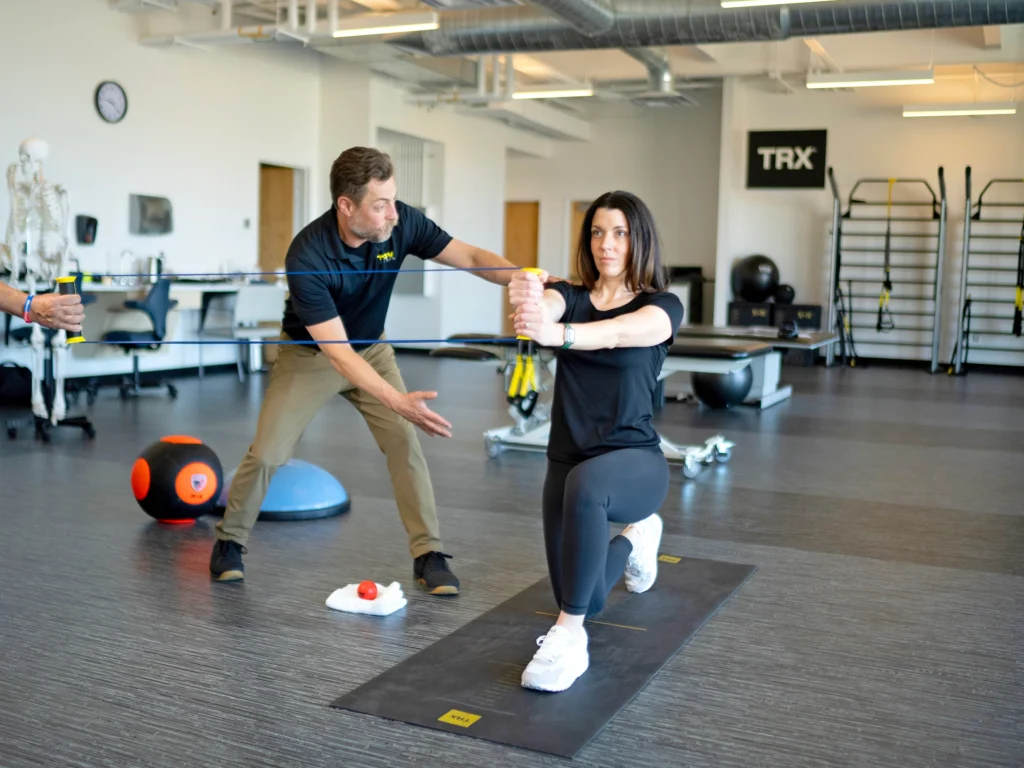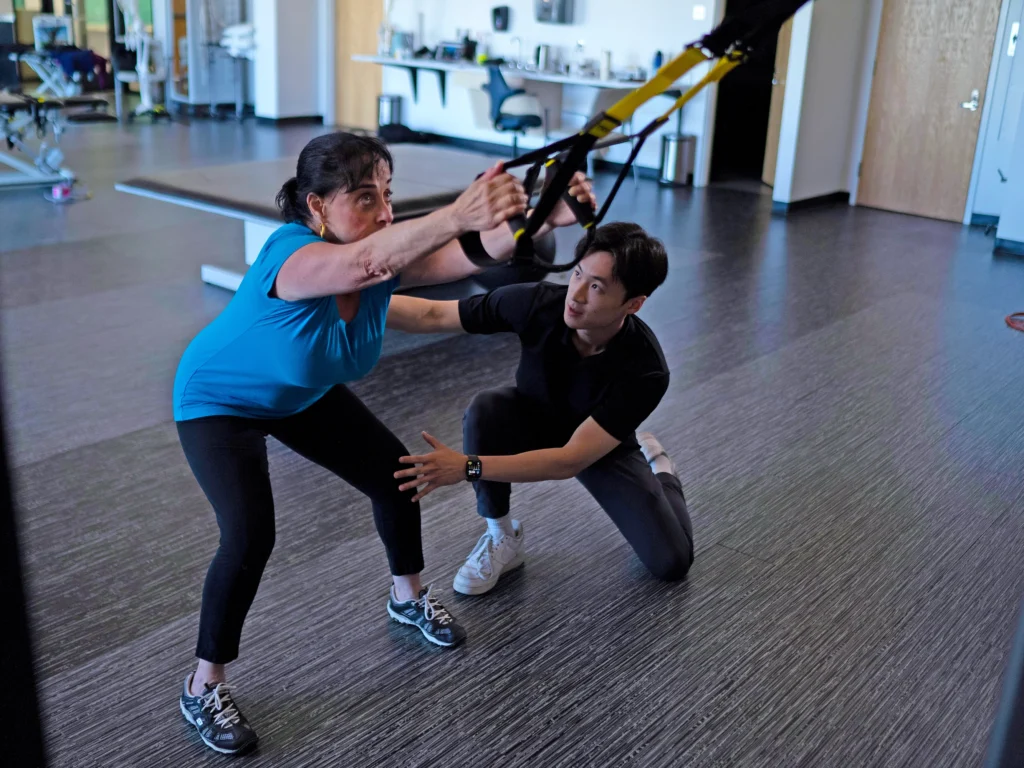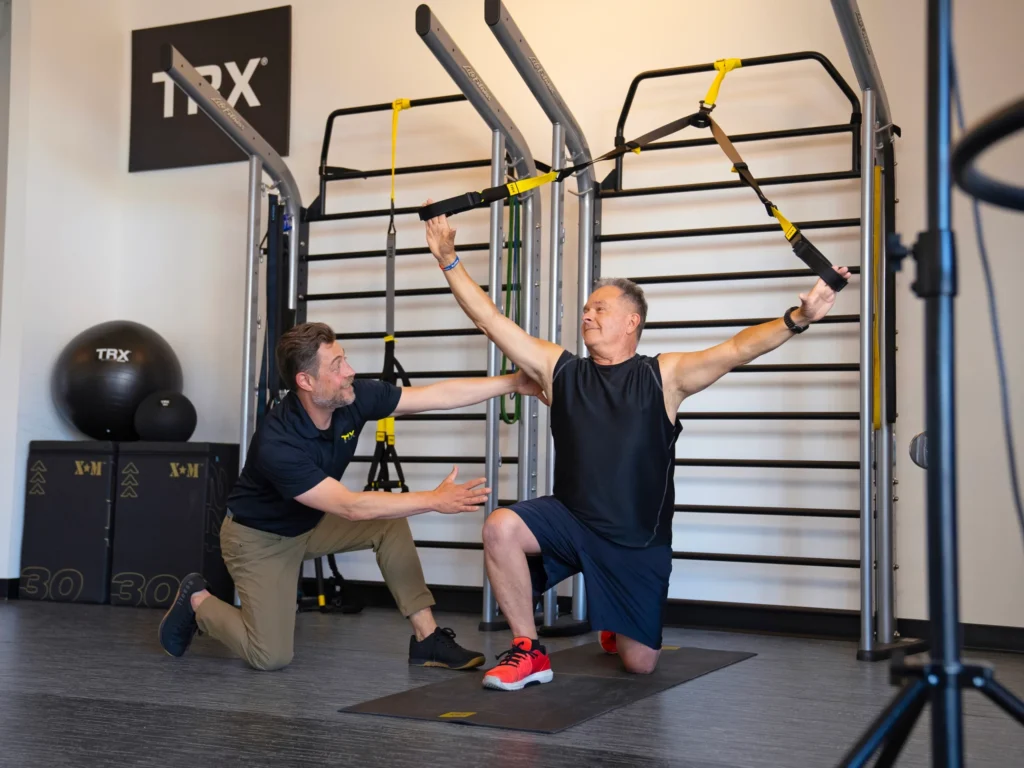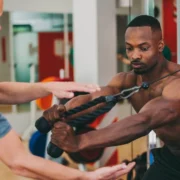The brand’s Suspension Trainer is making a name for itself in rehab facilities and clinics — supplying the demand for longevity-related fitness options in the process
When TRX began crafting its Suspension Trainer two decades ago, it did so with the intent to make fitness accessible anywhere. It was a requirement TRX founder Randy Hetrick knew first hand. The former Navy Seal needed a way to work out at different bases and ports and even in international waters.
In the passing years, and after some upgrades, the Suspension Trainer made its way into NFL and Olympic training centers, hotels, renowned fitness facilities and even random parking lots scattered across the country.
But today, “anywhere” includes rehab and clinical settings. While TRX’s products are something seasoned athletes and well-conditioned exercisers still reach for, they’ve also become a key asset for those looking to rebuild themselves.
Made for Rehab
Although the Suspension Trainer wasn’t originally designed to help individuals going through rehab, it didn’t take the brand long to recognize its potential to do so. The equipment acts as an anchor and suspension system that creates resistance against a user’s bodyweight, making it ideal for someone working their way back to full strength from an injury or health setback. It applies a level of control that free weights or machines sometimes lack.
“This training has the unique opportunity to scale intensity across a continuum of low to high loads and stable to unstable positions,” said Brynne Elliot, vice president of education at TRX. “We are not just training muscles, but teaching the body how to move as an integrated system. This fosters resilience, adaptability and long-term well-being.”
Suspension Training takes those going through rehab across three stages — the first dealing with any swelling or decreased function, then a regeneration stage to build strength and coordination, followed by a resilience stage which builds power. The TRX Rehab Essentials Online Course empowers healthcare professionals to effectively integrate TRX Suspension Training into rehabilitation programs, while the TRX App assists with programs and procedures that guide users or operators through proper set up and use.

The Suspension Trainer benefits individuals emotionally as well. Users appreciate that the product is designed for people with all skill levels and abilities. Therefore, workouts feel like workouts, not painstaking tasks that remind them of their injured or impaired state.
“When I’m using it with folks that are hurt, they don’t necessarily think they’re hurt,” said Lynne Virant, a physical therapist and TRX Master Instructor. “The Suspension Trainer is seen more as an exercise tool addressing capability rather than disability.
“I taught a TRX Suspension Trainer Course at Fort Sill, Oklahoma, specifically working with Army service members in the Wounded Warrior Program,” she went on. “One of the soldiers said to me, ‘What I’ve loved about today is we’ve been focusing on what we can do, and most often, when we’re injured, people like to focus on what we can’t do,’ so it’s empowering from their perspective.”
Supporting Longevity
The Suspension Trainer’s single anchor point creates a controlled level of instability that naturally reveals movement limitations or weaknesses, while simultaneously providing a unique stability system that allows users to safely explore and address these areas. This design enables users to examine their movement quality in a supported environment, identify specific opportunities for growth and systematically build the foundation for long-term health and vitality.
“You’ll start to discover areas where balance, stability or mobility need attention — the instability brings these to light,” said Virant. “But because the system provides that underlying stability and control, you can safely work on those areas and adapt. When you can continually bring awareness to your movements in a supportive environment, you can continue to improve your movement over time. You, plus the Suspension Trainer, are a powerful combination for maintaining health and preventing issues before they develop.”
With the help of an instructor, TRX can even take people struggling with basic movements and return them to a level of comfort that supports their daily lives. Even with something like a chronic health issue or injury, bending, pulling and stretching with the Suspension Trainer builds a foundation for long-term health after recovery.
“My dad was struggling with some swelling in his legs — his walking suffered, he was just kind of shuffling his feet,” said Virant. “When he was able to come to class, even through the issues related to the swelling, he developed those same muscles. That way, weeks later, when that swelling came down, he retained some of that movement and strength. He didn’t completely lose that capacity, which is really beneficial, especially as you get older.”

“Incorporating TRX Suspension Trainer as the primary or an ancillary exercise session into weekly routines can be a time-efficient strategy to bolster handgrip strength, core stability and balance, all of which are synergistic lynchpins of healthy aging and longevity,” added Wayland Tseh, professor, school of health and applied human sciences at UNC Wilmington.
Improving Outcomes
But promoting longevity doesn’t start and stop in the gym or rehab clinic alone. The journey continues after you get back on a bench, field or bike with full force.
Chris Nentarz, the Rehabilitation and Wellness Director at Thrive University, argues that getting individuals back to peak form is only one step on the path to prolonged health. The existence of a prior injury, healed or not, still leaves them susceptible to future ones.
“I think the biggest predictor of future injury is past injury,” Nentarz said. “Getting our patients to 100% isn’t good enough. We need a solution for people to do things at home on their own.”
That’s where the Suspension Trainer’s original purpose as a use-from-anywhere innovation benefits the user once more. People can train when they’re away from their rehab facility and build progress on their own.
“The Suspension Trainer is great because you can put it up in a door, outside on a tree and travel with it,” Nentarz added. “It helps foster compliance, reproducibility and both increase patient outcomes.”
The TRX app also features resources that show users movements and exercises to prevent injury or improve performance. The strength, flexibility and coordination users establish pays dividends in all aspects of life.
“Life happens outside the gym,” added Virant. “We’re promoting more than just recovering from injury and getting back in the gym — we’re focused on how you can exercise and transfer that strength and mobility into your daily life and the activities you love to do. Whether that’s golf, running, cycling, yoga, pilates or navigating pre and postnatal changes, we have training that prepares you for real life.”
Going forward, TRX aims to invest further in the clinical capabilities of the Suspension Trainer, citing ongoing research with the University of North Carolina Wilmington.



